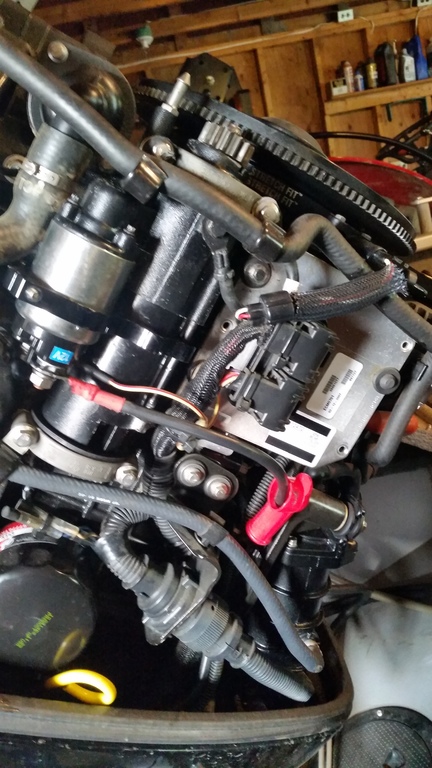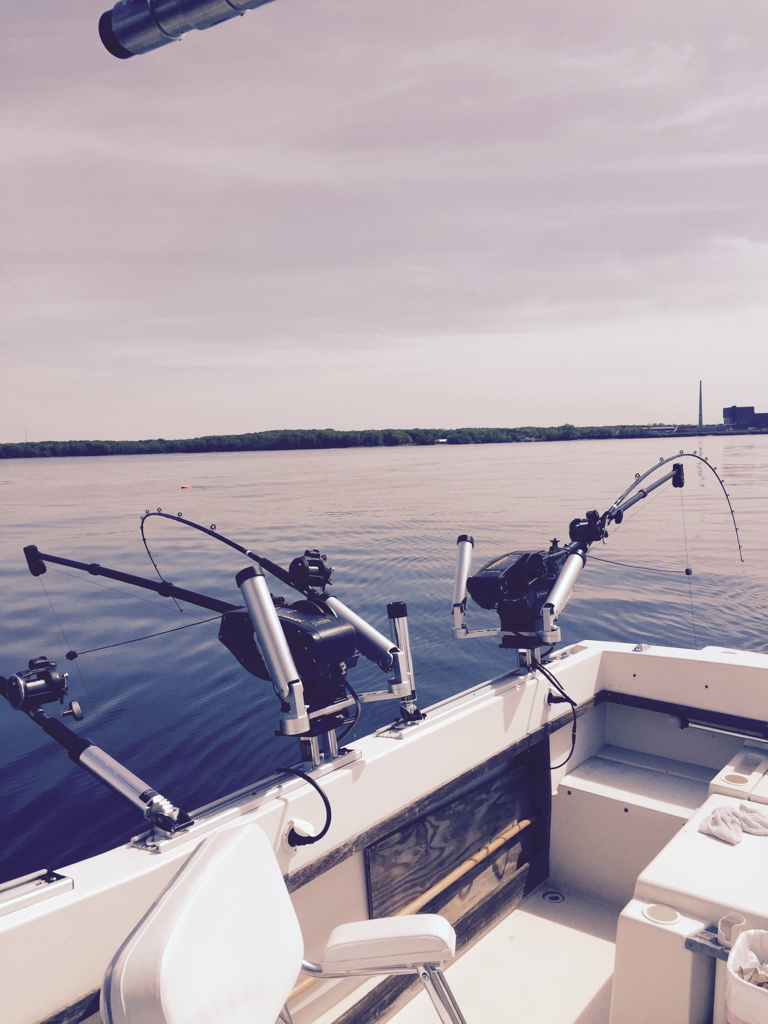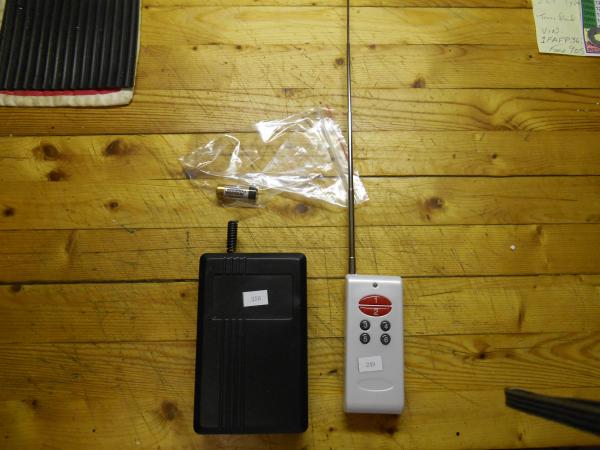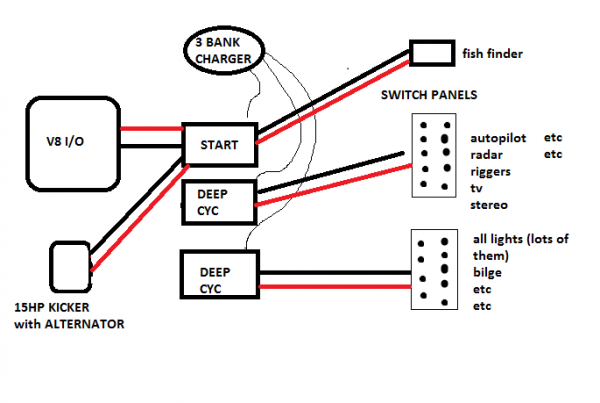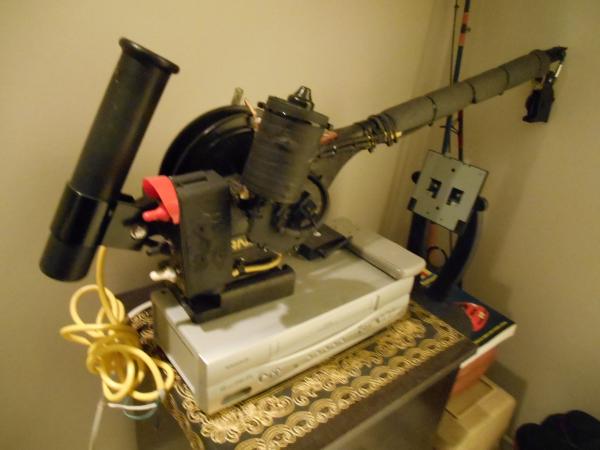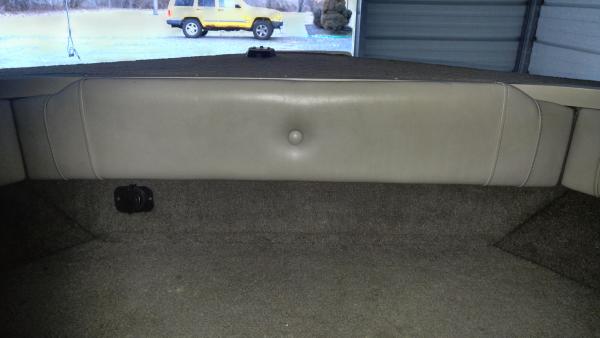-
Posts
74 -
Joined
-
Last visited
Everything posted by RSF
-
MARINE VHS Restrictions Letter to Transport Canada Our Marine Channels rules are so strict re license requirements to use a Marine Radio here and rightfully so. BUT, I sent a letter that Transport Canada open talks with Canada's CRTC to open a SINGLE Marine VHF Channel that can be used in May Day May Day and Pan-Pan-Pan conditions for use by a leisure boat user with certain call-conditions. So many new boats are equipped with Marine VHS Radios and being able to use ONE Emergency channel (not 16 or 9) that can broadcast to nearbye boats for help where life or sinking may be immanent. It's common sense in an emergency on the water I feel. I received confirmation my email letter was rec'd and it's content will be reviewed by the powers. I will update once I receive their reply.
-
Usually smoking at any connection point of the heavy batt to solenoid, to starter cables is a bad connection or corrosion , including starter to block bad ground condition, once key is in turned to start. First: Batt level 12.6 volts? Second inspect connections on any Perko or other batt isolator that may or may not be installed along the heavy cable lines then on to same inspection all the way to starter. That' where I'd start if I understand your smoke problem correctly. I have never run into anything other than the above somewhere along the run when it smokes on Start.
-
Change the high-tension coil wire from the dist cap to coil after a spark test if failed from/to same on original wire. Or your coil may be shot if no flash-over.
-
Depending on the engine year/OEM..for the few dollars and an hour of time Re&Re the magnetic pick-up inside the distributor cap.
-
Low output gas generator and a smart battery charger is what I use. Suppose having a van or pick-up helps re space but it sure does the job on site and fast.
-
Been working on a drag behind 8-10 Amp charger. It's a appx 1'x 6" egg type unit with a special prop that when dragged during trolling or slow movement will generate through its regulator, 14.6 VDC at 8-10 amps. Just unhook from transom and battery then store-it. Obviously for the small boat with little to no batt charge circuit in the outboard as well as small sail boats. but use high-draw electronics particularly Down Riggers and Electric Trolling Motors. The price for the available units is hellishly expensive for such a simple device. Trying to work with Minn Kota and others to develop and build.
-
OVERBOARD ENGINE OFF...New/Continued Hi again all Lake Ontario United - Folks! Have made my previous "Overboard Engine Off" Post - device reality. Please read the following if you wish, Thanks. Introducing my Overboard Engine Shut Down device. (First Post here at LOU.) It's called the “SEA KEY” ! Did you know, that Canadian Natural Resources lists that 8-14 % of boating deaths occur when the operator falls overboard while his boat is under propulsion at the time and the boat carries-on leaving the operator in the water alone.? FACT. Having “SEA KEY “ installed may one day save your life or that of a family member while boating. WHAT IT DOES: There are three models. MODEL 1-4: Upon falling overboard while your boat is under propulsion, the SEA KEY will Shut-Down your outboard or electric motor. Allowing you or a family member time to re-board your boat. The first model, designed and tested by me what very-very good. Here are the options it can perform: SHUT DOWN YOUR Outboard Motor (Optional Model): SHUT DOWN YOUR Electric Motor (Optional Model): NIGHT-TURN ON a Super-bright on-board mounted SOS Flasher, as well as performing above items 1 & 2 “Shut Down”. (Stand alone Model to remote lock-out your engine from starting (under-design at this time). IMPORTANT NOTE: The above does NOT replace nor was it designed to replace any engine manufacturer's “ Safety Tether System”. (All installations require a vessel have a 12 volt battery or battery system on-board). I have spent more than two years in the R&D process and am now ready to share my device with you. Please note, I'm already booked for several installation from now until May. The installation that I do will be done on site around the golden horeshoe area of Southern Ontario. Cost of the Unit or Cost of Installation will Vary depending on Vessel & Engine type and SEA KEY Model options. Authorized Marine Mechanics may also install after briefings from me verbal and written and following a signed agreement. It it not recommended the device be installed by the “backyard mechanic” - we're dealing with advanced boating safety and electrical modifications are required. All installations are custom installations. Please contact me via PVT Message for more information if interested in learning more.
-
HI all, Been awhile but have made some advancement on the remote engine shut-off device for the lone fisherman.... Actually almost completed. The only thing after final assembly is pictures of it (device), Laymans wiring schematic and bought a HD Camera to show..I'd rather not post on utube as there's a Marine Electronics Co (well known) willing to sign an NDA, after I sign something for this OEM.. But my word is good here and will give detail to you. And I know I could run into pat-pend troubles..but it's a safety device and that will have to be OK. Stand-by a month or two and it'll be posted here for those who may be interested. Scott.
-
Agreed w/work2fish. Use'm (solar panels) for and in place of weather shielding 100 watts or better and Coleman has jumped into and is serving this market well - performance and price on 12.6 volt battery(s). In my opinion the right thing to do with boaters w/boats with limited or little engine recharge power or just stationary, engine off.
-
Hi all, Yes Thun that's a given since unlike an automobile there isn't a body ground for all dc accessories (Down-rigger(s)).. well perhaps the gauge panel for low voltage neg return in some cases. Got confused as I was thinking any run for dc devices require a negative return.. sort of automatic-two wires on any run. Would add there are tables on the internet of what gauge is required depending on the length of the run and amperage rating of the rigger or other devices alone or sharing the same power line. Would also add, the longer the run the more inefficient DC power becomes which I would suggest would come into play for those smaller outboards boats w/out a charging system or the 5-8 amp charge rate at almost full throttle - types. Thanks.
-
Hi all, Great job (link) ..better than nothing but this guy needs a trace from the solenoid forward as well as a schematic of his particular boat's electrical system particularly ANY switches that may have been ON at the time of the battery-cross connect short.
-
-
-
-
Something's obviously not right here. Suggest adding up all wattage of items on w/generator running then checking the generators total output capacity. Under load, the generator will lose RPM and if operating RPM or auto RPM adjuster isn't set correctly or overloaded..troubles upon it.
-
Agree with TileMan Dan. Run eight gauge from Battery to fuse switch panel. Ten gauge to each after and follow fieromx3 shared chart for long-run wire gauge suggestion. Add all amp draws, add 5-10 and use that fuse or circuit breaker at battery (7 to 8" from positive post) to the eight gauge main. For me, I open the connector and sand (diamond grit 100), then enclose the wire, add appropriate heat shrink tubing, crimp and solder the connection. (Forget the pen solder type, use a weller or something made to heat heavy meat connectors), then position and heat the the heat shrink tubing. I always have a main fuse at battery positive as said above, and the rated fuse per item before the on/off switch. Have never had a problem.
-
Nothing. Nothing to where, the engine (eight gauge to solenoid), or fuse panel... Do you have a multimeter? A load of troubles may have occurred when a direct short happens at battery while connected to the engine and boat systems, especially anything ON at the time.. from switch contacts, fuses to engine alternator damage. As far as engine fuses, other than the ignition to engine solenoid many outboards don't have one.
-
Hi all, Not a Lowrance man though that's not to say their products are anything other than dependable. Steps I might take, considering only 25 min sonar run time is checking the continuity of all connectors. Looking for a cut in the transducer line and load testing the battery being used, not sure if your saying the Lowrance spec says 11.9 VDC minimum (as that is 40% power remaining mark) or your battery is at 11.9 VDC after 25 minutes of running the unit. The other factor if sending the unit into Lowrance for diagnostics. I agree that the unit should be tapped into the battery directly using one fuse 7-8" from the + terminal.
-
-
The only part original in the cranking area is basically the handle. All other parts, including the through shaft is changed, reason: to make the electrified unit completely reversible back to original. I used a length of "Heavy Wall" 1/2" OD copper tubing for the new shaft - non corrosion in fresh or salt water use. I made a schematic of all in my old computer, ufortuantely I had problems with that old dell and cannot access the hours of work making the schematically both electronically and mechanically. But I can walk you through the basics my examining my Cannon-modified version. No matter what, the alignment from motor output shaft to the through shaft must be pretty much perfect to prevent binding. When removing the original shaft, washers, friction disks, etc..place them directly on a string so as NOT to lose their order of original assembly. Youll have to remove all steel downrigger line and remove the pin running through the spindle reel-shaft-spindle reel. I found it easiest using a can on a stick with a homemade reel to remove line (no kinks). The trick is is how to make a perfect alignment which I found a away to do once I had the new motor with mounting legs using a piece of Styrofoam plate to tap-mark the three leg holes and centre motor drive. to trace over to the cannon frame. The motor threads are 6mm but lately I see you can buy an adapter for the output shaft 6mm-5/16 inches, however with that coupling, it may be too long as you need space between the outshaft (motor) to main copper through shaft? Electrical..I would suggest some soldering knowledge as I do not trust just crimped switch and wires connection.
-
-
Sure I can help you through it. Never thought to write a schematic. One: buy the heavier-duty 12 volt geared motor w/reversible and if possible "two speed" new windshield washer motor from: "Fright Props" USA. Cheapest and the motors are new. Two: Off ebay or where ever, one Double Throw, Double Poll 20 AMP 120V,AC-30 AMP DC-toggle switch "ON (OFF) ON", meaning momentary on. I'll walk you through it..but be aware..not for anyone who cannot solder electrical connections...
-
Hi all, living in ethanol Country with few Sunoco's around, I found out some Shell stations have it. What I had been doing mainly due to old gas gooing the system internally is, when winterizing, I switch to a small 1 gallon gas tank w/75% stabilizer, 10 20/40 oil (about a cup at pick-up line) and run it through until the engine stops. Effectively sealing the fuel flow/pump routing. It has worked for me for about thirty years..back then I ran wd40 (all that was available then) as after one winter of leaving the fuel trac dry, well it didn't as fuel deposits remained in the pump and was gooing the diaphragm pump inlet/outlet valves.
-
NEW DESIGN - Additions: Hi all, From: 433MHz 4 channel, 100-150 metre straight line range (OVERBOARD: Shut down, Flashing Strobe) To: 315MHz 6 channel, 250-400 metre straight line range (OVERBOARD: Shut down, Flashing Strobe, with Engine steer) After more thought, and a lot of research, I have decided to make a couple design enhancements. Firstly, I wanted increased range and found it through 315MHz power remote to add 100-250 metre increased range. Secondly, hopefully, I'll be successful in designing a secondary electric steering control that if the boats getting away and the weather is making high-waves and/or extreme underwater currents extremely difficult to catch up with the boat, I'll have the the second option of boat coming to me instead of just being able to shut-down the more and turn-on the SOS beacon. My initial problem is the attachment design of the motorized mechanism that wont interfere with the motor's regular steering but will hook-in once remotely activated. The Port and Starboard I feel wont be a problem, the above is. Antone with thoughts please help with you ideas. Thanks.
-
Hi TileMan Dan and all, Just didn't want to pay the 500-1000 for the electric. Made the one in the picture for about 80. Found the motor new for 25. Plus mine has the manual handle attached and the motor drive quick-disconnect during those times when the battery gets low. It's all set for nightfishing with a high intensity led on the head which is directed to which-ever angle the heads at to see the weight and read the depth at night. Completely reversible to original.



